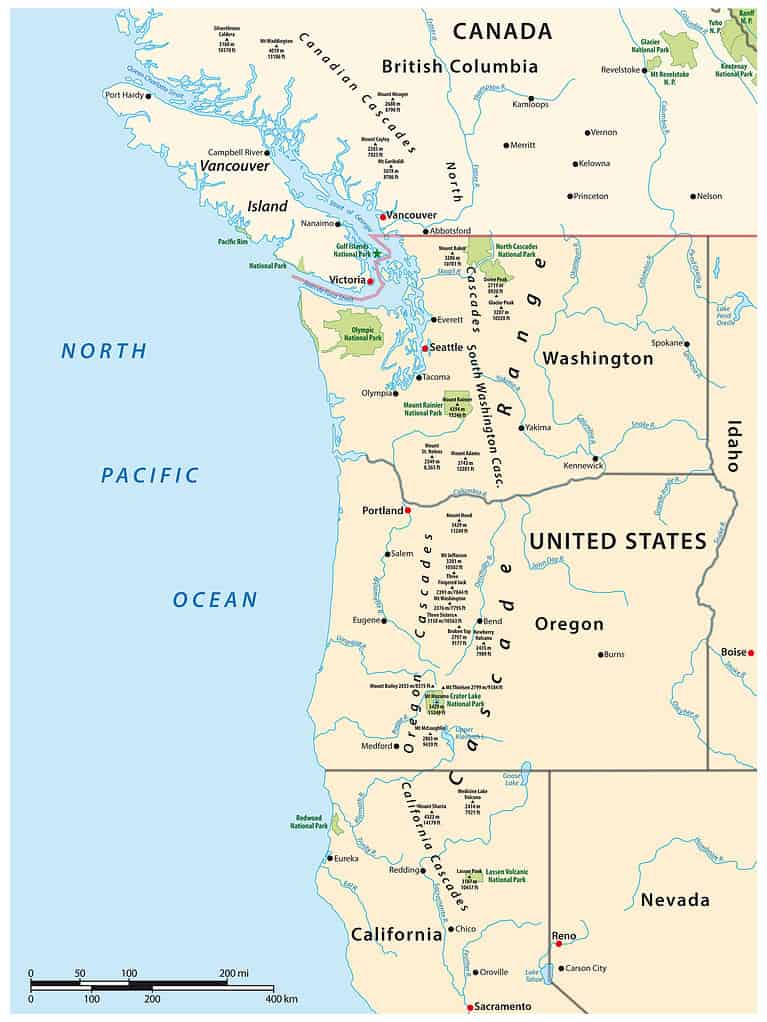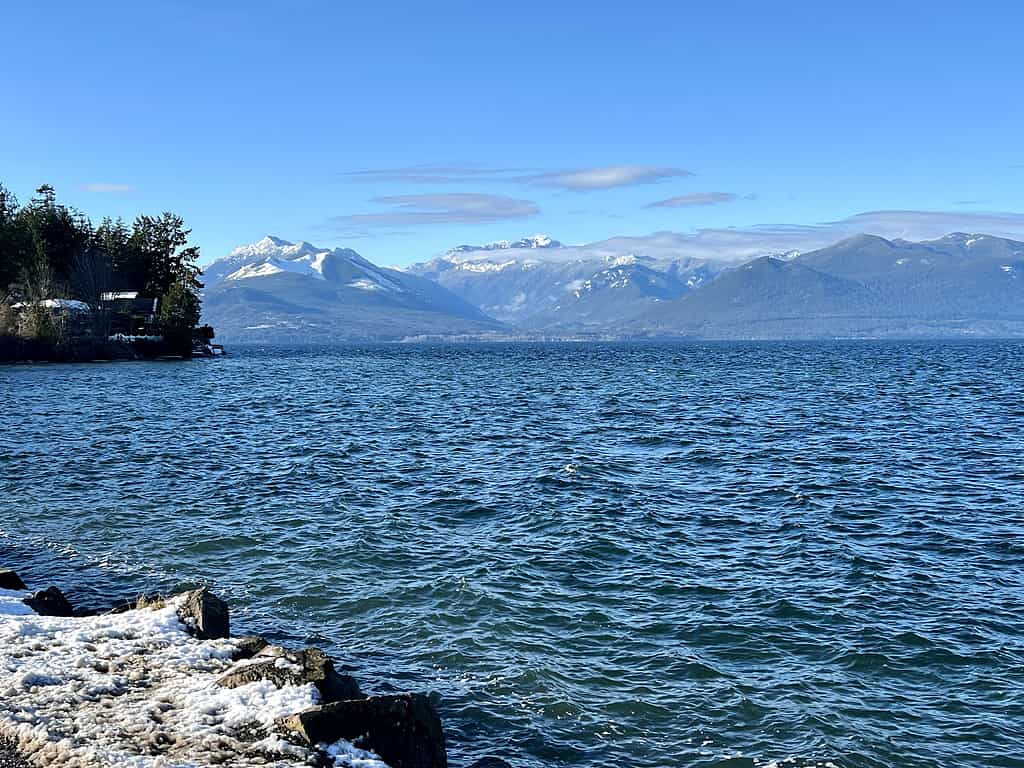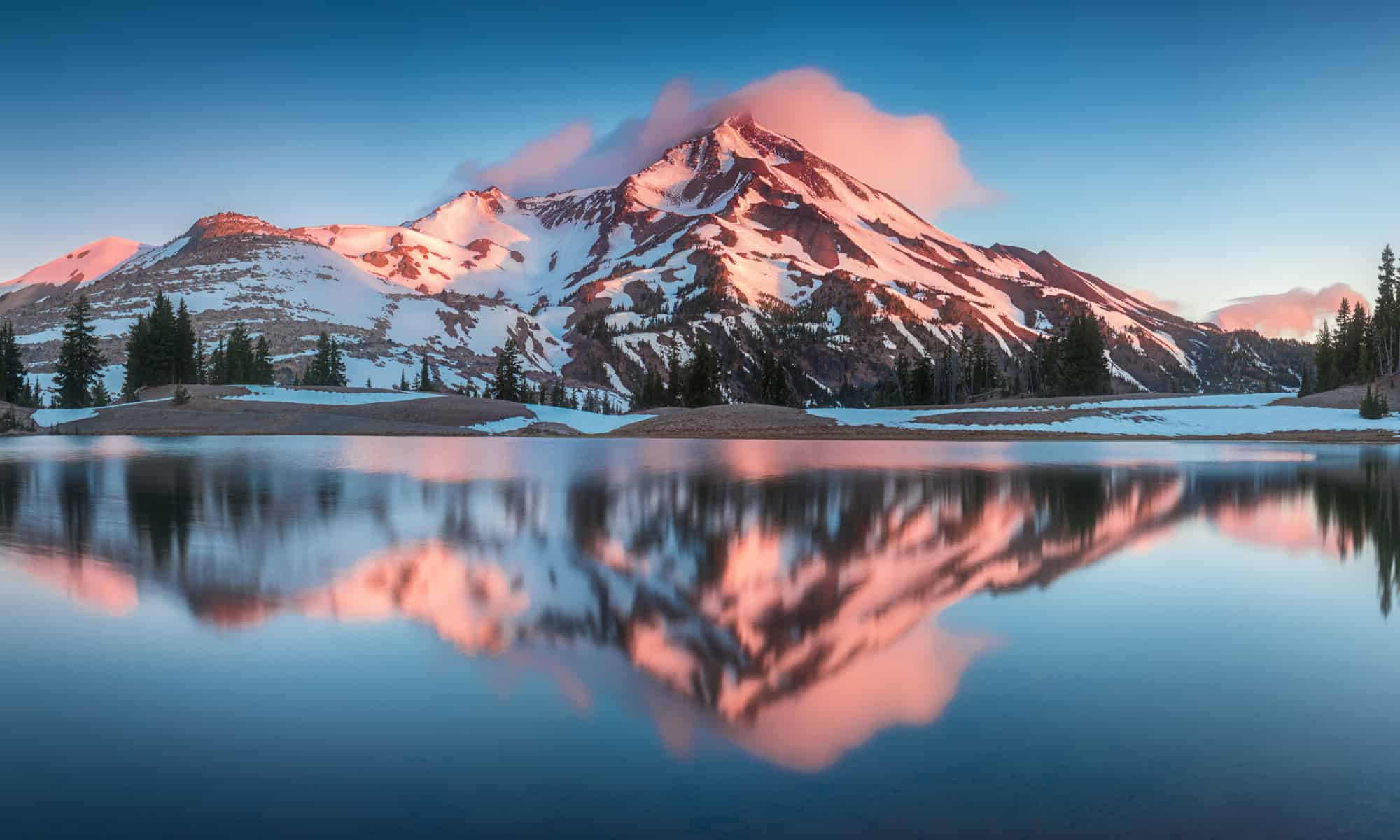There is a huge push by native cultures to begin the process of renaming the Pacific Northwest. Should the waters and volcanoes regain indigenous names?
Controversy is rife around the renaming of landmarks within the United States. Proponents believe that it honors the people who used to live in the area that had centered their lives around these geographical features. Others believe changes negatively rewrite history in light of a fluid political climate.
When American and European settlers arrived in the Pacific Northwest (PNW), they applied new names to the geography they found. These names had nothing to do with the ancient indigenous cultures in the region, and they disregarded long-standing names in native languages. Unfortunately, some of the original names are lost to history, though others are not.
Renaming the Cascade Range That Defines the Pacific Northwest

The Cascades are a volcanic mountain range in the Pacific Northwest.
©Rainer Lesniewski/iStock via Getty Images
The original name of the Cascades was Yamakiasham Yaina which is the language of the Klamath people. This translates to Mountains of the Northern People. This major US mountain chain extends from Canada’s British Columbia down through Northern California.
The Cascades gained their anglicized name from a treacherous part of the Columbia River crossing in the mountains. This rough area was called the cascade, and this label was used on the nearby towering mountains as well. When David Douglas, a Scottish botanist, used the phrase the Cascade Range in his journals in the early 1800s, the name stuck.
Changing Many Names Using the Slur Squaw
More than 938 landmarks in 37 states in the United States use the word squaw even though it is a derogatory slur. Hundreds of these landmarks are in the PNW. In Washington alone, a few examples are Squaw Butte, Squaw Creek Ridge, 5 Squaw Creeks, the Squaw Islands, and 4 Squaw Lakes.
While the origins of the term squaw has a vague indigenous history, no one is sure how the slur as it became known to white colonialists came to be. Regardless, it evolved to mean a nonwhite savage woman in poverty or a native prostitute.
The racism of settlers made naming geographical features after indigenous women’s bodies a common norm, and this history needs to be corrected. It has been proposed that these landmarks should be given names that honor indigenous women who were historically or are currently an influential part of local communities.
Changing the Name of Hood Canal to an Indigenous Name

It’s been proposed that the Hood Canal should have its name changed to the Salish Fjord.
©melinda krieger/iStock via Getty Images
It has been proposed that the Hood Canal should be renamed to the Salish Fjord. That’s because the current name nods to a person who had never seen the PNW. It also uses a term to describe the waterway that isn’t an accurate descriptor.
The Hood Canal isn’t a canal at all. It’s a fjord that was created about 13 thousand years ago. It was carved out by glaciers, though the word canal implies that humans had a hand in building it. They did not.
The reason the name Hood is ascribed to this canal is because Captain Vancouver, who charted much of the PNW, named it Hood Canal on his maps. He chose Hood in honor of his friend Admiral Hood who helped out during the Revolutionary War. However, Admiral Hood never saw Washington State. It seems logical, then, that the Hood Canal be named something more reflective of a different slice of history than that which the current name honors.
Mount St. Helens Has an Indigenous Name

The indigenous name of Mount St. Helens is Lawetlat’la.
©Wirestock/ via Getty Images
The original name ascribed to Mount St. Helens by the Cowlitz is Lawetlat’la. Lawetlat’la means The Smoker. This is an apt name as this volcano is known to have been active as recently as 1980. It also experienced visible and profound volcanic activity in 1857, 1898, 1903, and 1921.
The Cowlitz consider Lawetlat’la a mainstay of their geography. Like most features in the PNW, it was renamed to its current moniker by George Vancouver.
Oregon’s Crater Lake and Its Indigenous Importance

Giiwas is the indigenous name for both Crater Lake and Mount Mazama to the Klamath and Modoc.
©Wollertz/Shutterstock.com
Crater Lake is called Giiwas by the Modoc and Klamath. The mountain that collapsed around 7700 years ago to form Crater Lake was also known as Giiwas to these indigenous people. The American name for this ancient mountain that is just a remnant of its previous stature is Mount Mazama.
The Klamath people believe that the Chief of the Below World named Llao lived in Mount Mazama before it erupted. When it had its cataclysmic eruption, it was said that Skell, the Chief of the Above World, and Llao were battling. With the help of two holy men who threw themselves into Mazama’s crater, Skell was able to get Llao back into the volcano and into the Below World.
Renaming Washington’s Mount Rainier

There is a push to restore Mount Rainier’s name to Tahoma.
©Thye-Wee Gn/Shutterstock.com
One of the most famous volcanoes in Washington State is Mount Rainier. Originally, its name was Tahoma which was the name ascribed by the Puyallup tribe. Other tribes living farther from the volcano called it Pooskaus, Ti’Swaq, or Talol.
There is a movement to restore its original name which is Tahoma. Not only is Rainier a name ascribed by people who didn’t originate from the PNW but it is named after someone who had never seen the volcano.
Captain Vancouver, the first person to chart some of Washington’s coast and the Puget Sound, named the volcano after Admiral Rainier. This Admiral never went farther than the east coast of the United States during the Revolutionary War.
It seems silly, then, that Mount Rainier is named after this Admiral. It’s a great example of how names were meant to strip places of their indigenous identity. This stripping was done by applying meaningless names rooted in colonialism. It makes sense why the indigenous people living around Mount Rainier want to restore its original name.
Some Proposed Changes by Landmark:
| Name of Geographical Feature | Indigenous Name | Culture Indigenous Name is From | PNW Location by State |
|---|---|---|---|
| Cascade Mountains | Yamakiasham Yaina | Klamath | Washington, Oregon, and California |
| Mount Baker | Kulshan | Nooksack | Washington |
| Mount Rainier | Tahoma | Puyallup | Washington |
| Mount St. Helens | Lawatlat’la | Cowlitz | Washington |
| Mount Adams | Klickitat (named after locals) | Klickitat | Washington |
| Mount Hood | Wy’east | Multnomah | Oregon |
| Mount Jefferson | Seekseekqua | Confederated Tribes of Warm Springs | Oregon |
| Three Sisters | Klah Klahne | Confederated Tribes of Warm Springs | Oregon |
| Crater Lake | Giiwas | Modoc and Klamath | Oregon |
| Mount Shasta | Uytaahkoo | Klamath | California |
| Mount Lassen | Kohm Yah-mah-nee | Mountain Maidu | California |
| Celilo Falls | Wy-am | Various including the Yakama, Confederated Tribes of Warm Springs, Umatilla, and Nez Perce | Oregon |
| Columbia River | Nch’l Wana | Sahaptin | Oregon and Washington |
| Hood Canal | Salish Fjord | Name Chosen For Native Language Group | Washington |
Thank you for reading! Have some feedback for us? Contact the AZ Animals editorial team.








